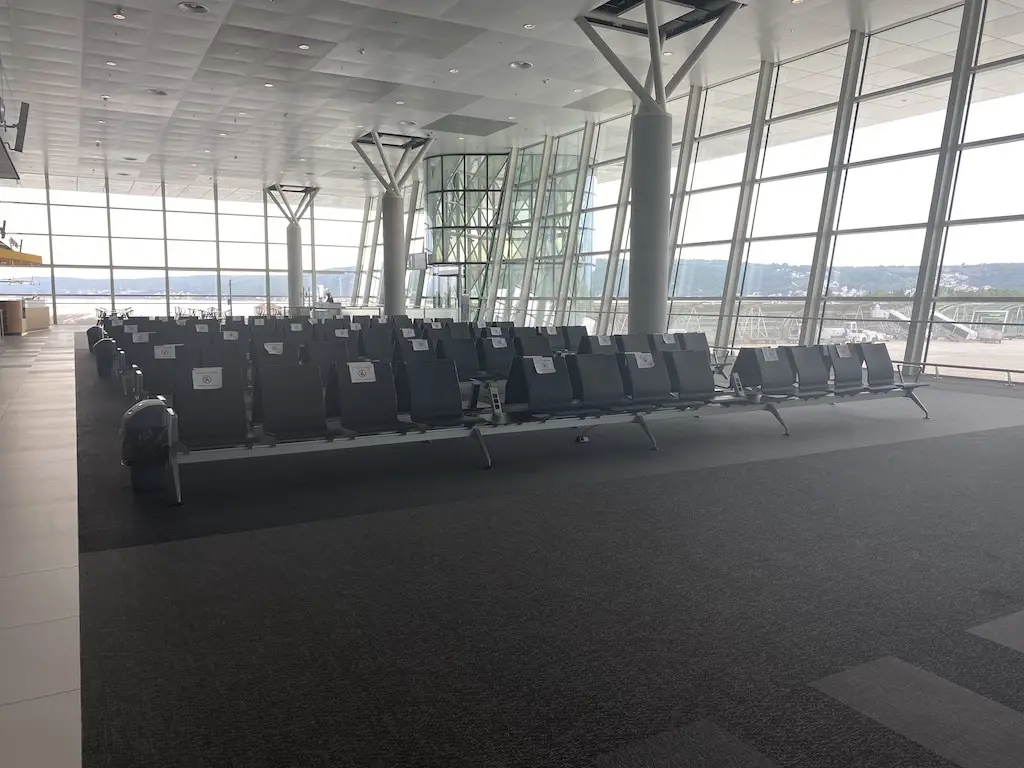After Split Airport saw a substantial investment to upgrade and expand its facilities just a few years ago, all to accommodate millions of passengers in the summer, the COVID-19 pandemic has left it empty.
Namely, Slobodna Dalmacija reports that there are only 200 to 400 passengers who pass on average in both directions a day, on five to six planes that land on the runway. During the week, passengers can fly directly to Rome, Munich, Frankfurt, and Dusseldorf, while all other destinations can only be reached via Zagreb.
With 3.3 million passengers in 2019, figures fell to 674 thousand last year. Mate Melvan, the head of the passenger reception and dispatch service, says that nothing can be worse than last year and predicts that next summer will be much better. Turnover has decreased by five times, but there is work to be done.
“Our work is more diverse and full of challenges. From hour to hour, we monitor the database with the epidemiological situation of each country, which changes the travel conditions for passengers on these flights,” he says.
“Information is important because all that is reflected on us, and every day is a new rule for a country. It can be the same, similar, or completely different from ours or some other state, and coming to work does not mean that what we did yesterday will be valid today or even during the day. Passengers face changes practically just before the trip, which can be quite challenging. Many are full of understanding, cooperative, but some do not accept, resent, and think that we or the aviation industry make the rules, not the national headquarters of the states. And when they buy a ticket, they think we are obliged to transport them from point A to place B, that we are responsible. Sometimes they point out some illogicalities for a reason, but we have no choice but to abide by the regulations. Not only are measures taken in our country without prior notice, so it is within the entire Union and elsewhere,” says Melvan.
Just one difficult passenger is enough:
“Last year, at one point after reopening, Germany only allowed entry if you have an “essential reason” which includes work, death, medical treatment. A few passengers on the first flight wanted to buy a car because they are engaged in resale. They bought the ticket thinking it was a good reason. We called the carrier, he called the border control, and at the same time, we contacted the operations center by e-mail. They said – no, that can’t be a good reason. If he even makes it upstairs, he will be rejected and the carrier punished for bringing him up. So we had to inform the passengers, and they were not happy. For two days, one of them called the police, and then someone at the customs, trying to prove through everyone he knew that someone was to blame. Some travelers really don’t understand,” he added.
And that is just one example.
Melvan’s associate Katarina Dujmov, the coordinator of the passenger service, says that it is increasingly difficult to meet the paperwork some countries require:
“In recent days, we have noticed that some countries have started to close in some way. They won’t say ‘there will be no travel from tomorrow,’ but they will complicate the situation. Norway, Belgium, the Netherlands tightened the conditions, France was quite tough anyway. You need to have a fresh PCR test, so some are looking for an antigen test, and statements on why you are traveling there. A statement that you have not been in contact with a COVID patient, that you board a plane without a fever, that you have no symptoms. Every country has something of its own. All the slightly more northern countries, I guess, are thinking about the new strain of the virus. People travel for various reasons because they have to, and hardly anyone will go for tourism now. It is complicated,” says Dujmov, emphasizing that they did not receive any instructions regarding passengers who were vaccinated.
However, there are still some traveling purely for tourism.
“These are people who resist the limitations of their lives and want to realize their desires. It is possible, but it requires a lot of effort and investment, and it is also risky. You can travel, and on the way back, a new measure can change the plan. No one can predict that” they added.
They say that, like the rest of the nation, they are becoming better experts in epidemiology every day.
Goran Boric, the operations center coordinator, deals with changes in the flight lists, and still has less stress than his colleagues, as changes happen within three weeks.
Mate Melvan believes that things will improve this summer and that more people will travel. His optimism is based on the experience of the last short season in which they raised traffic to 40 percent, and from twenty percent in other months.
Also, announcements for the season are excellent. Direct flights to 100 destinations in 25 different countries are open, and the European Commission’s aviation industry rules are awaited to see what will be realized. By Easter, they will get a more realistic picture of how the flight schedule from Split Airport will look.
“The old normal will return, maybe the recovery will take a little longer, and this large area of the airport now benefits us because of COVID-19. There is room for space between people; the risk is reduced. Last summer, 500,000 passengers passed through here, some of whom probably had coronavirus, but no one became infected. Wearing a mask, distance and disinfection proved to be effective during the epidemic,” says Mate Melvan.
To conclude, none of the 400 full-time employees of Split Airport was fired due to the reduced volume of work, but they brought a package of austerity measures which included a reduction in salaries for all.
For the latest travel info, bookmark our main travel info article, which is updated daily.
Read the Croatian Travel Update in your language – now available in 24 languages.
Join the Total Croatia Travel INFO Viber community.











